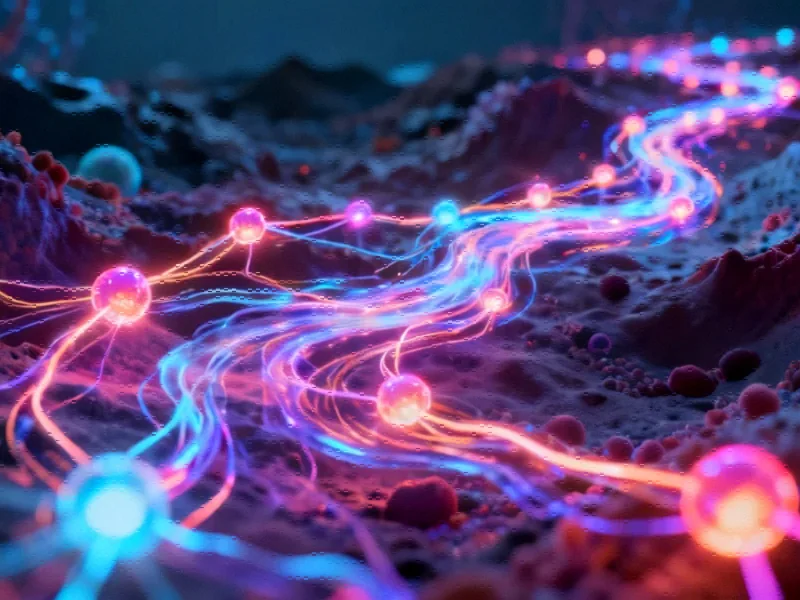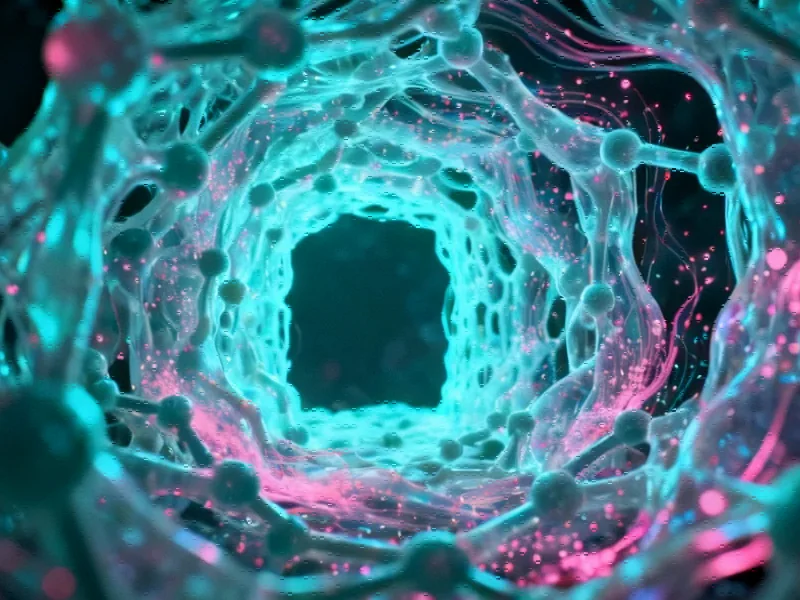Decoding Cholesterol Attraction Through Physics-Based Evolution
In a groundbreaking study published in Nature Communications, researchers have employed physics-based evolutionary simulations to unravel how transmembrane helices naturally evolve to attract cholesterol. This research reveals fundamental principles of molecular recognition that govern cholesterol distribution in cellular membranes, with implications for understanding cellular organization and developing therapeutic interventions.
The investigation utilized artificial evolution within a model membrane system composed of 30% cholesterol and 70% POPC (1-palmitoyl-2-oleoyl-glycero-3-phosphocholine), containing a single 20-amino acid peptide sequence positioned transversely through the membrane. Researchers validated their findings using both Martini 2 and the newer Martini 3 coarse-grained force fields, ensuring robustness across computational methodologies.
The Evolutionary Convergence Toward Cholesterol Recognition
Starting from completely random peptide sequences, the evolutionary simulations consistently converged toward optimal cholesterol-attracting patterns. The fitness function was defined as the ensemble-averaged non-bonded interaction energy between the peptide and cholesterol, effectively maximizing local cholesterol density around the peptide.
Through systematic testing of population sizes ranging from 4 to 320 individuals, researchers established that populations of 128+ individuals reliably converged to global optima rather than local solutions. This convergence threshold proved critical for obtaining reproducible, high-fitness sequences across multiple evolutionary runs.
These findings demonstrate how evolutionary simulations can reveal fundamental biological recognition mechanisms that might otherwise remain hidden in natural systems.
Conserved Structural Motifs for Cholesterol Sensing
The high-fitness sequences from multiple evolutionary runs revealed a distinctive structural pattern: a short conserved hydrophobic core flanked by two hydrophilic blocks composed of conserved positively charged lysines (K) and arginines (R). This configuration appears optimal for cholesterol attraction while maintaining transmembrane stability.
Notable differences emerged between force fields. Martini 2 exhibited strong preference for three consecutive lysines as the most evolutionarily conserved residues, while Martini 3 showed equal competition between lysines and arginines. Both versions featured negatively charged aspartic acids at terminal positions, with higher conservation in Martini 3.
This research contributes to our understanding of molecular recognition principles that could influence future technology development in biomedical applications and drug discovery.
Hydrophobic Block Length Determines Cholesterol Affinity
Investigating the role of hydrophobic block length revealed a surprising relationship: cholesterol affinity increases with decreasing hydrophobic block length, with optimal effects at 2-4 leucines. This pattern represents a trade-off between short block length and transmembrane stability.
When researchers artificially restrained transmembrane orientation for extremely short motifs, they eliminated stability constraints and restored functionality. This demonstrates that cholesterol attraction is primarily mediated by positively charged lysine residues deeply embedded in the membrane, consistent with their evolutionary conservation.
These findings highlight how subtle structural variations can dramatically impact molecular interactions, a principle that extends to complex system design across multiple domains.
Force Field Artifacts and Real-World Relevance
The study uncovered significant force field dependencies in cholesterol attraction patterns. Martini 2 displayed unexpectedly strong attraction between cholesterol and certain amino acids (proline, valine, leucine), which researchers attributed to artifacts from exaggerated interactions between small bead types.
Martini 3 showed a different pattern, with only alanine and glycine displaying significant net attraction toward cholesterol. Atomistic simulations further refined these findings, suggesting only glycine may exhibit weak but significant attraction in more realistic models.
Despite being conducted in simplified POPC model membranes, verification using a coarse-grained model of native epithelial membrane demonstrated the universality and persistence of the resolved attraction features in more realistic environments.
Implications for Membrane Biology and Beyond
This research specifically focused on maximizing attraction of free membrane cholesterol rather than cholesterol-enriched phases. The resolved motif is not expected to optimally bind toward the interface of cholesterol-enriched liquid ordered domains, yet cholesterol clustering occurs independently of membrane phase.
The findings provide fundamental insights into molecular evolution and recognition that could influence multiple industry developments in biotechnology and pharmaceutical research. Understanding how proteins naturally evolve to interact with cholesterol opens new avenues for designing synthetic membrane proteins and developing cholesterol-targeting therapeutics.
As computational methods continue to advance, physics-based evolutionary approaches promise to reveal additional biological recognition codes that govern cellular organization and function, contributing to broader scientific and technological progress across multiple fields.
This article aggregates information from publicly available sources. All trademarks and copyrights belong to their respective owners.
Note: Featured image is for illustrative purposes only and does not represent any specific product, service, or entity mentioned in this article.



